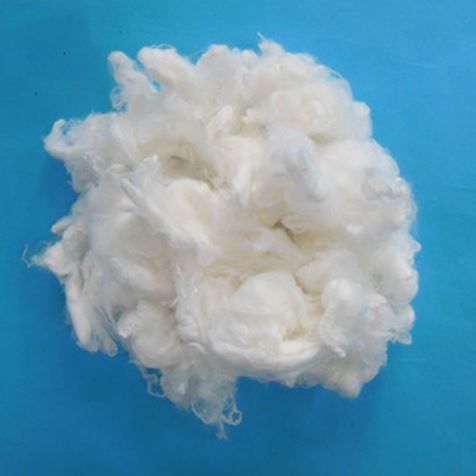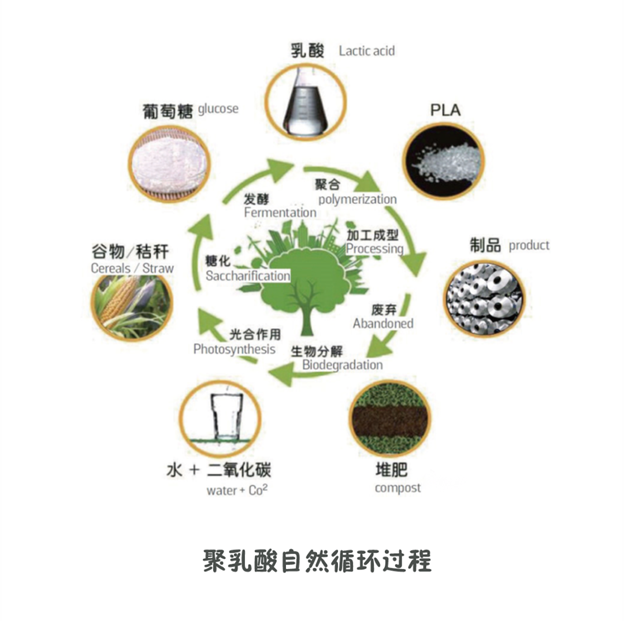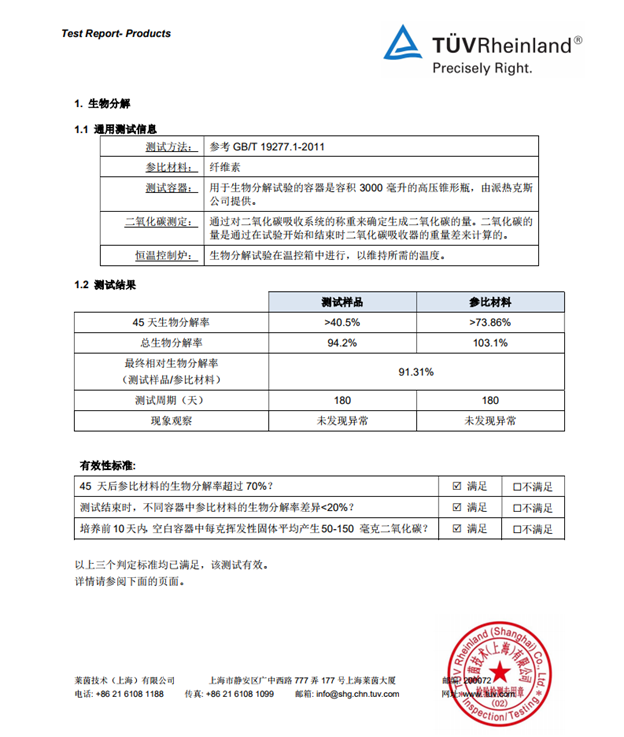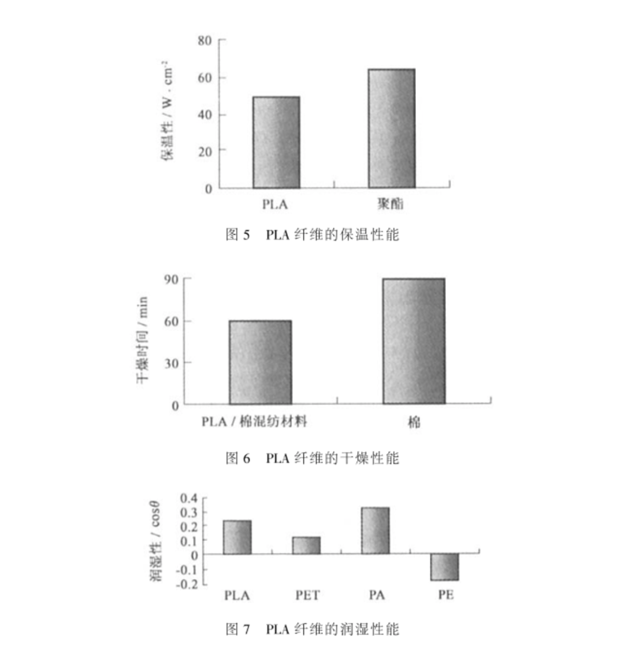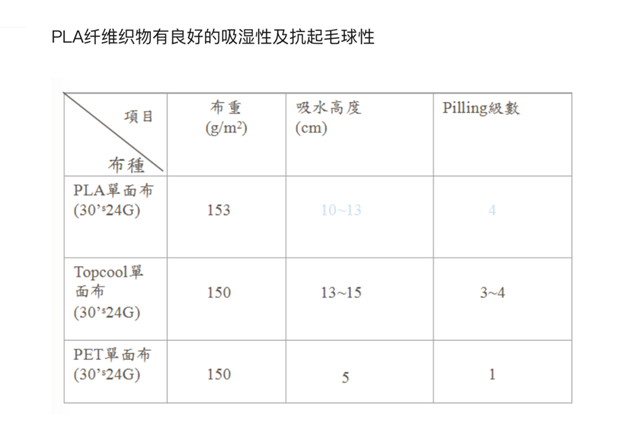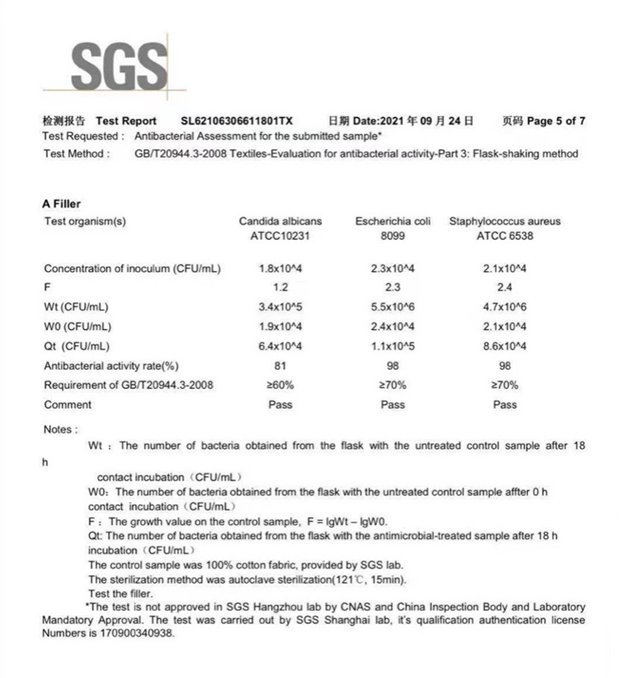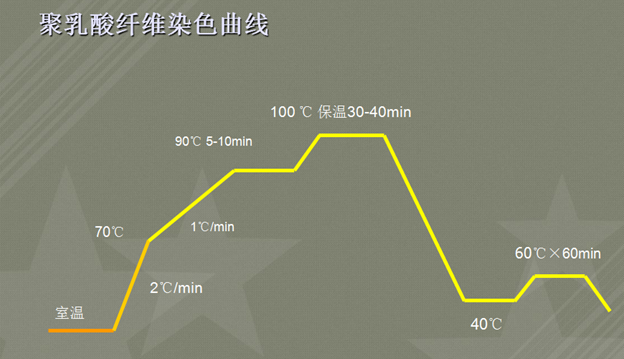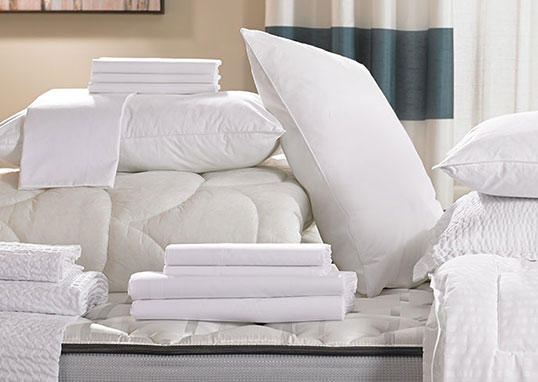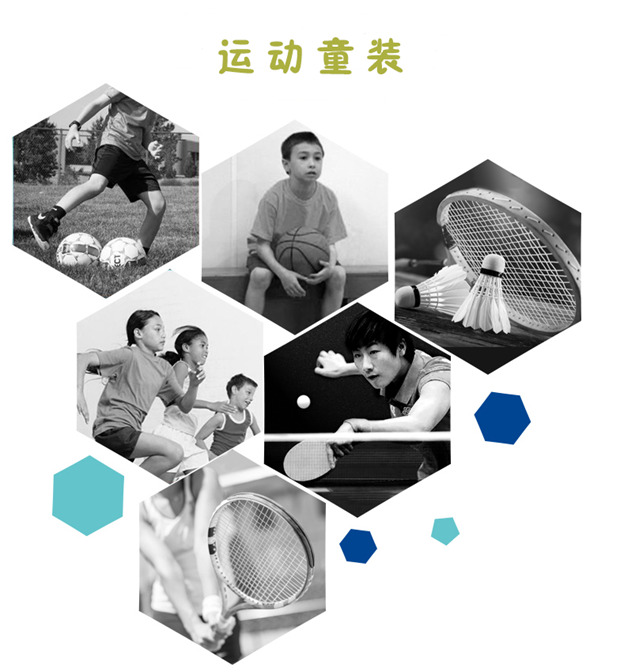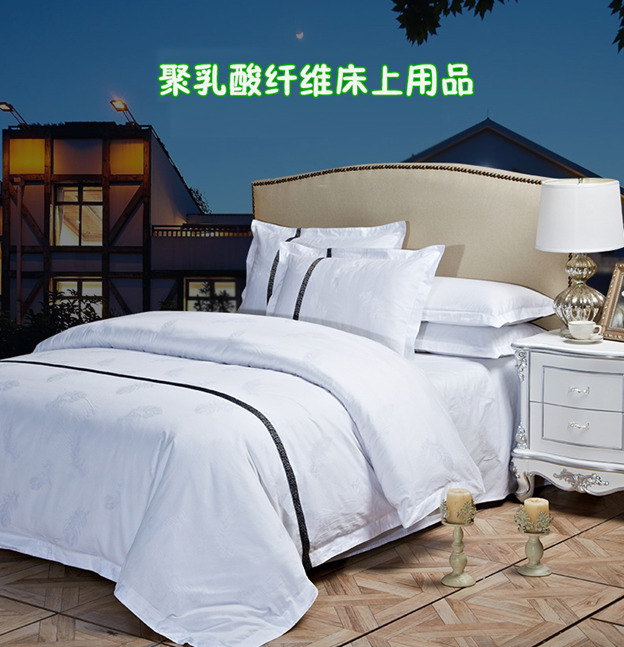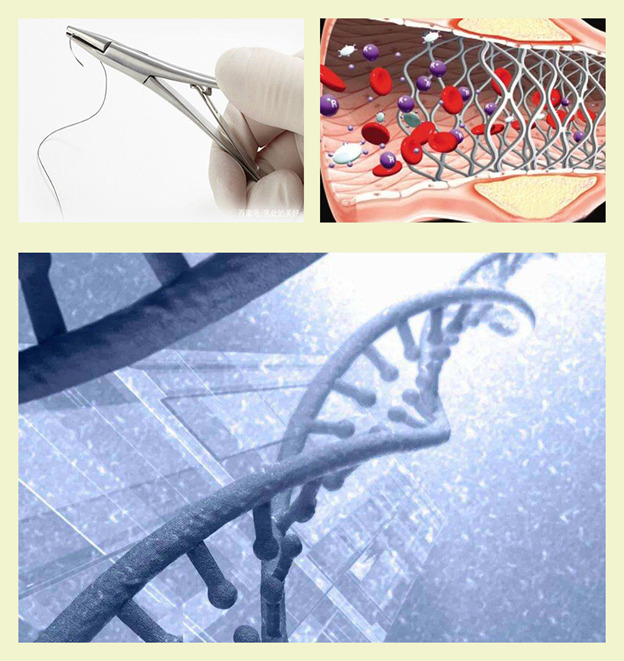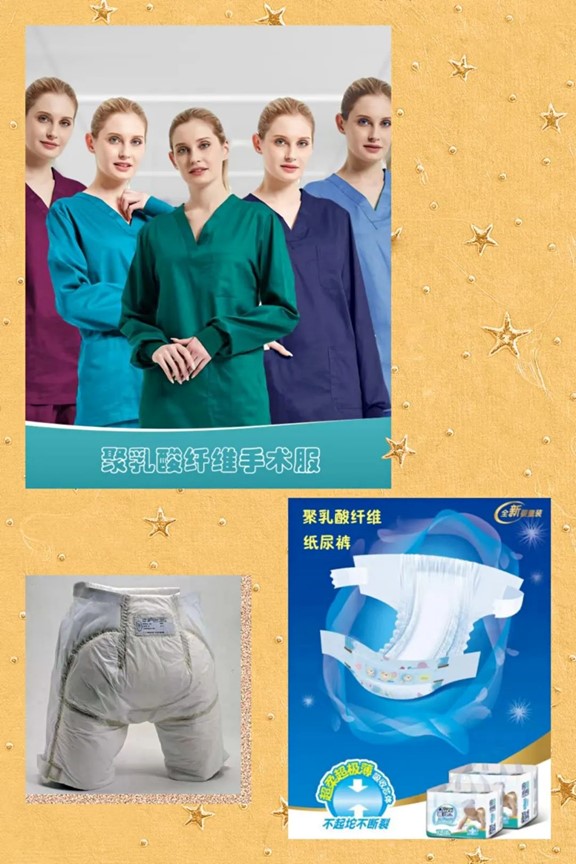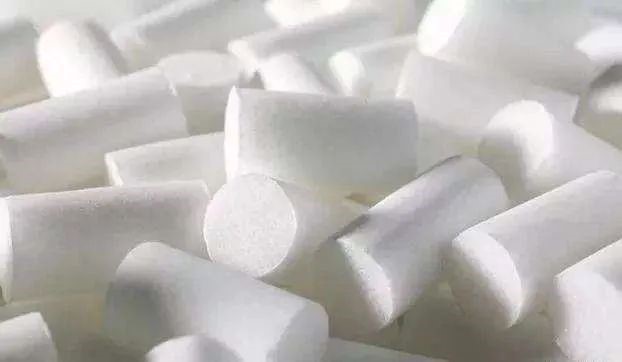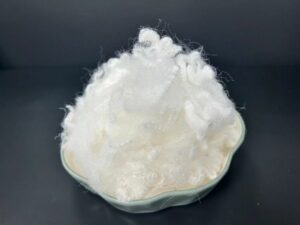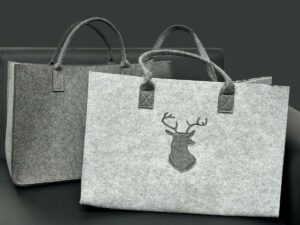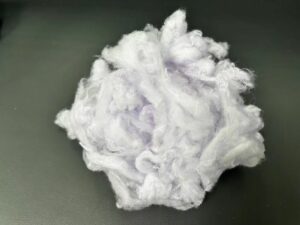What is PLA Fiber (Polylactic Acid Fibers)?
PLA fiber, also known as corn fiber, is made from starch based biomass such as corn and potato. PLA fiber has environmental protection, non-toxic, antibacterial, flame retardant and good biocompatibility, and can be completely biodegradable under normal composting conditions.
PLA Fiber is made from PLA (PolyLactic Acid). also, PLA is made from corn. The fiber products are highly smooth and completely non-irritating to the skin, also they are 100% biodegradable and compostable. The fiber-forming substance is a lactic acid polymer in which at least 85% by weight are lactic acid ester units derived from naturally occurring sugars (sugar beets and corn).
Although compostable, polylactic acid is quite durable in most applications. In fact, PLA does not readily degrade unless it is exposed to high humidity and elevated temperatures (≥ 60°C) which results in rapid decomposition of the fiber. Thus, for most applications, its durability is acceptable or good. The tensile strength of PLA fibers is comparable to those of polyester fibers. However, PLA has a low Tg of only 55 – 60°C and thus, is less heat resistant than polyester (PET). It is also more flammable and less abrasion-resistant.
PLA is the only melt-processable natural-based thermoplastic that can be melt spun into filaments which is often the most economic and convenient method. However, the fiber can be also spun by several other methods. Dying can be accomplished with dispersing or direct dyes using conventional processes when avoiding (strong) alkaline conditions.
PLA fiber is a type of synthetic fiber made from polylactic acid (PLA), a thermoplastic polyester derived from renewable sources such as corn, sugarcane, or cassava. PLA fiber is biodegradable and compostable, and has many applications in textiles, agriculture, and medicine. PLA fiber is also used for 3D printing, as it has low melting point, high strength, low thermal expansion, and good layer adhesion. PLA fiber is considered a more environmentally friendly alternative to petroleum-based polyester fibers such as polyethylene terephthalate (PET)
Production process of PLA Fiber
PLA fiber starts with an abundant, natural resource – plants (usually corn and potatoes). Starch in plants ferments to produce lactic acid. From lactic acid a molecule called lactide is created. Water is then removed and it gets crystallized to create the high-performance polymer – polylactide (PLA). Also known as polylactide, PLA is a non-aromatic polyester derived 100% from renewable resources.
Polylactic acid fiber, referred to as PLA fiber, also known as corn starch fiber, is extracted from corn and other plants, fermented to produce lactic acid, and then refined and polymerized to form polylactic acid, and then processed into clothing products through spinning and weaving . After being discarded, it can be decomposed into carbon dioxide and water through the action of microorganisms, and can be absorbed and utilized by plants again through photosynthesis. Such a circular process truly embodies the concept of sustainable development of green environmental protection and circular economy.
PLA fiber is biodegradable, the fiber is soft and smooth, and the strength is moderate. The products made have silky luster and comfortable skin touch and feel, good hygroscopicity and quick-drying effect, good drapability, and good heat resistance. Non-toxic, natural antibacterial and anti-ultraviolet functions, it combines the effects of scratching and gloss, and has excellent wearing
- Pure natural material, completely biodegradable
The raw materials for producing PLA are abundant. All natural biomass raw materials containing starch, cellulose and hemicellulose can be used to produce lactic acid, and then polymerized to produce polylactic acid. In order to avoid ” competing with people for food and land with food ” , non-food crops ( such as cassava ) can also be used as raw materials, or even organic waste (corn cobs or roots, stems, leaves, skins, straw, straw, Urban organic waste, industrial waste, etc.) can be used as raw materials to produce lactic acid, and then produce polylactic acid. These raw materials can be obtained through continuous planting. As no oil or wood is used, this will protect limited oil and wood resources. Compared with natural fiber cotton, the yield per mu of PLA fiber is large. For example, the yield per mu of cotton is only 63Kg, while that of corn can reach 325Kg. Therefore, the same acre of land can produce more PLA fiber than cotton fiber. In addition to this, 29,000 tons of water are required to produce one ton of cotton fiber, while less than 100 tons of water are required to produce one ton of PLA fiber.
The melting point of PLA fiber is lower than that of polypropylene fiber, and the energy consumed to produce PLA fiber is less than that of the three major synthetic fibers, and also lower than that of PTT and Lyocell fibers. The comprehensive energy consumption of the product is currently the lowest in the production of major chemical fibers.
PLA fiber can be degraded naturally in nature, and can be quickly decomposed into carbon dioxide and water under the action of microorganisms in soil or seawater. According to the test of relevant departments, more than 40.5% of PLA fiber can be degraded after 45 days of landfill, and 94.2% after 180 days . It can be degraded and is an environmentally friendly fiber. When PLA fiber burns, it will not emit poisonous gas, will not cause pollution, and realizes carbon cycle. It is a sustainable ecological fiber.
- Lightweight, warm, skin-friendly and breathable
The density of PLA fiber is 1.27g/cm3, which is a lightweight fiber and tries quickly after being wetted with water without feeling sticky or heavy, The young’s modulus of PLA fiber is between polyester and nylon, so it feels slightly harder than nylon, but much softer than polyester. PLA fiber has a low refractive index and has elegant luster like silk. When worn in winter, the thermal insulation of PLA fibers is more than 20% higher than that of cotton and polyester fibers. In summer, PLA fiber fabrics have excellent moisture permeability and water diffusivity, absorb sweat and dry quickly, and can quickly take away body heat through evaporation. There is a refreshing feeling all year round.
The surface of PLA fiber is weekly acidic, and its PH value is 6.0-6.5, which is weekly acidic, and the skin of a healthy human body is also weekly acidic, so PLA fiber has good compatibility with weakly acidic skin. at the same time, when a person is exercising, the sugar in the body turns into energy, and lactic acid is formed in the body (muscle). The fact that the body itself accepts lactic acid is a safe material. It has natural anti-allergic and skin-friendly functions on human skin, and is especially suitable for making various skin-friendly products.
- Good resilience, wrinkle resistance and shape retention
The initial modulus of PLA fiber is low, the drapability is small, and the fabric has good drapability. When the tensile deformation of PLA fiber is 5%, the elastic recovery rate is as high as 93%, which shows that PLA fiber has good bulkiness and elastic recovery rate, which is better than nylon. The fabric made has good elasticity and good wrinkle resistance, which is very suitable for making sportswear.
In addition, PLA fibers and their fabrics do not absorb ultraviolet rays, and their strength and elongation are not greatly affected by long-term ultraviolet radiation. After 500 hours of outdoor exposure, PLA fiber can still retain about 55% of its strength.
- Natural antibacterial, antibacterial, anti-mildew
PLA fiber has natural antibacterial and antibacterial ability, without adding any other ingredients, it can form a natural and stable antibacterial environment on the surface of the fiber, making it difficult for Staphylococcus aureus, Escherichia coli and Candida albicans to reproduce.
- Good flame retardancy
The limiting oxygen index of PLA fiber reaches 24-29, which is the highest among commonly used fibers, and is already close to the national standard’s requirement for the limiting oxygen index of flame-retardant fibers to be 28-30. PLA fibers are not easy to burn, and have good self-extinguishing properties after burning. During the burning process, only slight smoke is released, and the amount of smoke is very small.
- Easy to dye, good coloring, bright color
PLA fiber is dyed with disperse dyes like polyester fiber, but it is easier to dye than polyester fiber. The pre-dyeing treatment, dyeing, post-dyeing and finishing of knitted/woven and interwoven/blended fabrics must follow the principles of low temperature, low alkali and short process. Generally, it can be dyed at 95°C to 100°C. For a small number of cases that need to be dyed dark, it can be dyed at 110°C. Even so, the dyeing temperature is lower than that of polyester. The dyeing temperature of PLA fiber is low, the setting temperature is low, and strong alkali is not used, which is in line with the trend of energy saving and emission reduction. Due to its lower refractive index, the color of PLA fiber dyed is also brighter.
Advantage of PLA Fabric
- 100% From Plants Antibacterial Naturally
- Low Carbon UV-stable
- 100% Biodegradable & Compostable
- Renewable & Sustainable
- Antibacterial Naturally
- UV-stable
Applications of PLA Fiber (Polylactic Acid Fibers)
PLA is fully biodegradable and biocompatible which makes this fiber attractive for medical applications like wound dressing. The fiber is also useful as an eco- and people-friendly alternative to existing textile fibers for industrial and consumer apparel applications.
PLA fabric is suitable for bedding, which is effective against bacteria, skin-friendly and harmless.
Major applications for PLA fibers and non-wovens include clothing and furnishings such as drapes, upholstery, and covers. Some exciting potential applications include household and industrial wipes, diapers, feminine hygiene products, disposable garments, and UV-resistant fabrics for exterior use (awnings, ground cover, etc.) among others.
- Denier: 4.5 D | 6.0 D | 9.0 D | 15 D
- Conventional color: Raw white | green | blue.
- PLA fiber are more hydrophilic than PET
- Low flammability and smoke generation characteristics.
- 100% biodegradable and compostable. PLA Fiber is made from PLA (PolyLactic Acid), also PLA is made from corn. the fiber products look and feel just like regular fiber, but they are 100% biodegradable and compostable. Corn is a renewable resource which makes corn fiber much more sustainable than regular fiber. Did you know that regular fiber is made from petroleum? PLA Fiber is however biologically degradable when subjected to the right conditions. It is therefore very well suited for waste treatment through composting. It will also improve the compost quality by increasing the C/N ratio in organic waste. Because lactic acid is made out of natural sugar resources, which are in turn made by photosynthesis out of CO 2 in plants, the material can be regarded as “CO2-neutral” and therefore renewable.
PLA fiber uses natural and renewable plant resources as raw materials, which reduces the dependence on traditional petroleum resources and meets the requirements of sustainable development in the international community. It has the advantages of both synthetic fibers and natural fibers, and at the same time has complete natural circulation and biodegradation Compared with conventional fiber materials, PLA fiber has many excellent properties, such as good drapability, comfort and hand feeling, good resilience, good crimp and crimp durability, etc., which makesPLA fiber in There are broad application prospects in the clothing market, household and decoration market, non-woven fabric market, medical and health protection and other fields.
- Clothing fabrics
PLA fiber has good shape retention. When blended with cotton, it has properties similar to polyester-cotton blended fabrics. It has good gloss, but does not produce metallic glare. Good hand feeling; when it is blended with wool, it has good shape stability, crease resistance and brightness; so it is suitable for dynamic clothing, children’s clothing, underwear and sweatshirts, etc.
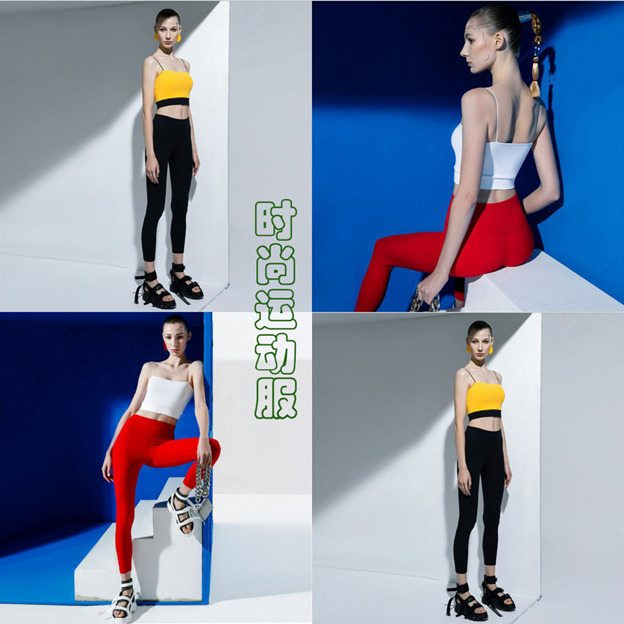

- Home textiles
PLA fiber has the characteristics of cashmere-like feel, silk-like soft luster, warmth retention of wool, and moisture absorption and moisture conductivity of cotton fiber. Its application in bedding (interweaving/blending) can give full play to its advantages of good skin affinity, non-irritating skin, and non-allergic effects, and overcomes the shortcomings of polyester-cotton/wool-polyester fabrics and is better than cotton/wool fabrics. Excellent dimensional stability and skin-friendliness, easy to wash, dry and care.
- Industrial textiles
Automotive interior
medical supplies
Another characteristic of PLA fiber is its good biocompatibility. In this respect, it has some incomparable advantages of traditional medical devices. For example, in the past, stainless steel bone nails were used in the treatment of fractures and other orthopedic diseases, and the patient had to undergo a second operation to be cured; however, the use of polylactic acid bone nails only requires one surgical implantation. To a great extent alleviate the suffering of patients. In addition, PLA fibers have been successfully applied in some specific fields, such as the production of disposable infusion sets, non-removable surgical sutures, orthopedic fixtures and surgical devices, medical stents, biological catheters, etc. The pressure of medical waste on the environment.
Protective Equipment
PLA is a thermoplastic polymer with good toughness, good biocompatibility, skin-friendly and breathable advantages. It can be used to make products such as sanitary napkins, panty liners, diapers, medical gauze, bandages, bed sheets, high-grade antibacterial wipes, etc.
Daily necessities
At present, there are mainly two kinds of cigarette filter materials used in the market, one is cellulose diacetate fiber and the other is polypropylene fiber. Compared with these two traditional materials, the cigarette filter made of PLA fiber not only has a wide range of sources, but also is biodegradable, and its polar molecular structure determines its ability to absorb and remove harmful components in smoke. Therefore, the use of PLA fiber filters will bring about major changes to the cigarette filter industry. In addition, masks are another key application field of PLA fiber.
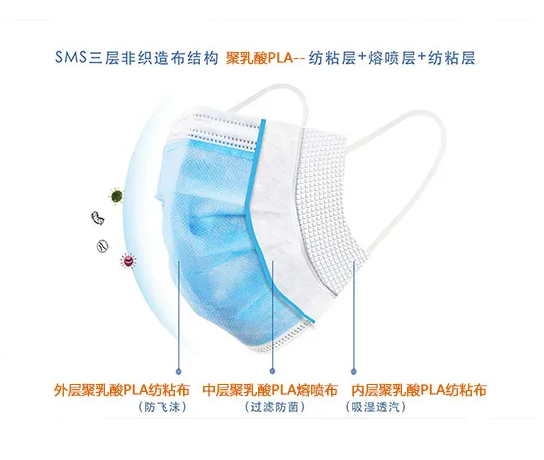
Is PLA fiber more expensive than PET fiber?
The price of PLA fiber and PET fiber may vary depending on the quality, source, and supplier of the materials. However, based on some online sources, PLA fiber tends to be slightly more expensive than PET fiber, as it is produced from renewable resources and has higher processing costs. PLA fiber also has lower availability and demand compared to PET fiber, which is widely used for various applications. The average price of PLA fiber is 25% more expensive than PET fiber. However, these prices may change over time due to market fluctuations, environmental factors, and technological developments.
How to recycle PLA fiber
There are different ways to recycle PLA fiber, depending on the availability of facilities and equipment. Here are some possible methods:
- PLA composting: PLA is a biodegradable material, which means it can be broken down by microorganisms over time. You can compost PLA filaments on your own, but it may take several months or years, depending on the temperature, humidity, and oxygen levels. You can speed up the process by shredding the filaments into smaller pieces and adding them to a compost bin with other organic materials.
- Filament re-extrusion: You can also reuse PLA filaments by melting and extruding them into new filaments. This requires a filament extruder, which is a device that can heat, mix, and shape plastic materials into thin strands. Filament re-extrusion involves two steps: first, shredding the PLA filaments into small pieces using a blender or a meat grinder. Second, feeding the pieces into the filament extruder and adjusting the temperature and speed settings to produce new filaments. You can also add colorants or additives to modify the properties of the recycled filaments.
- Optimise 3D printing settings: Another way to reduce PLA waste is to optimise your 3D printing settings to minimise the amount of material used and the number of failed prints. You can do this by adjusting the infill density, layer height, print speed, and support structures of your 3D models. You can also use software tools to slice, repair, and optimise your 3D models before printing them
These are some of the methods to recycle PLA fiber. However, you should also check the local regulations and guidelines for recycling bioplastics in your area, as they may vary depending on the country or region. Recycling PLA fiber can help reduce the environmental impact of 3D printing and promote a circular economy. 🌱

